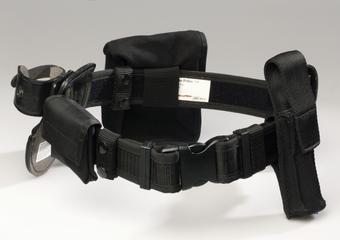

Tuberculin syringe, Record type, glass and nickel plated brass, unsigned, probably English, 1910-1940. Case not seen (see note).
Tuberculin is injected into the skin to see whether a person has been exposed to the bacteria that cause tuberculosis. If the skin shows a reaction after 48 hours, they have been exposed. The tests help catch the disease before it develops and prevents its spread. This type of test is known as the Mantoux test, named after Charles Mantoux (1877-1947), who invented it in 1907. The test is still used today, especially to confirm the results of other tuberculosis tests. This glass and metal syringe was probably made in England.
Details
- Category:
- Public Health & Hygiene
- Collection:
- Sir Henry Wellcome's Museum Collection
- Object Number:
- A620226
- Materials:
- glass, brass (copper, zinc alloy) and nickel plated
- Measurements:
-
overall: 116 mm 17 mm, .02kg
- type:
- hypodermic syringe




